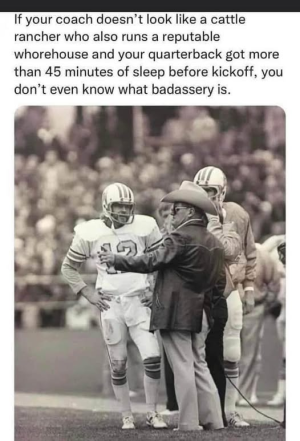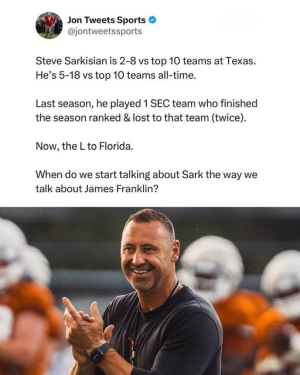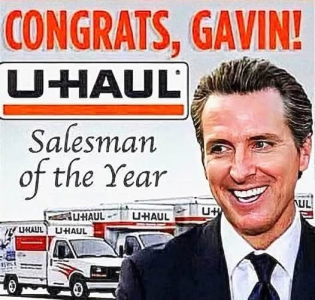-
Pat Flood (@rebarcock) passed away 9/21/25. Pat played a huge role in encouraging the devolopmemt of this site and donated the very first dollar to get it started. Check the thread at the top of the board for the obituary and please feel free to pay your respects there. I am going to get all the content from that thread over to his family so they can see how many people really cared for Pat outside of what they ever knew. Pat loved to tell stories and always wanted everyone else to tell stories. I think a great way we can honor Pat is to tell a story in his thread (also pinned at the top of the board).
You are using an out of date browser. It may not display this or other websites correctly.
You should upgrade or use an alternative browser.
You should upgrade or use an alternative browser.
Master Thread Dance Your Cares Away/Fraggle/Law Abiding Citizens
- Thread starter Bryan74b
- Start date
Master Threads
Camellaesque
We are from the future...
Like im 5. I do not understand the short thing.
You know if conservatives did this to anyone we'd get 30 years.
Time to put a reaper up in the sky.
If the price keeps going up, shorts get burned (lose money the higher it goes)Like im 5. I do not understand the short thing.
Is there a way to find out who's shorting what?If the price keeps going up, shorts get burned (lose money the higher it goes)
You know if conservatives did this to anyone we'd get 30 years.
This can't be legit. No way this could possibly be in the public forum. If so, unbelievable. Round 'em up.
Not that I'm aware ofIs there a way to find out who's shorting what?
THis bitch is crazier than Newscum.
People like this need the ABSOLUTE SHIT beat out of them 1 time to let them know that type of pathetic behavior is unacceptable.
People like this need the ABSOLUTE SHIT beat out of them 1 time to let them know that type of pathetic behavior is unacceptable.
And if we're being honest, then they need the shit beat out of them again as a reminder and for good measure.
You know if conservatives did this to anyone we'd get 30 years.
Well gents, that’s what we call a conspiracy.
I think one of the reasons they leave is from the old adage, be nice to people on the way up, because you'll meet them again on the way down. I imagine a lot of the folks leaving were twats to those people and now that their careers are waning, the don't want to face up to things
If that's Clooney's wife he is married to a dog butt ugly "woman".
You know if conservatives did this to anyone we'd get 30 years.
Saw someone advertising a laser type device that was so powerful it cut metal at 1000 feet. It was being sold over the internet to anyone as a self-defense weapon. You know it won't be used only for self-defense.
UT always goes for the hot commodity. Sark, Herman, Strong.
Goldhedge
Legendary
Eastern plains looks like that...That doesn't look like Colorado.
Lol

Goldhedge
Legendary
GROK: What is Shorting Stocks?Like im 5. I do not understand the short thing.
Shorting stocks, also known as short selling, is a trading strategy where an investor bets that a stock's price will decline. Unlike traditional "long" investing (buying low and selling high), shorting involves selling high first and buying low later. It's essentially a way to profit from falling markets or overvalued companies. However, it's riskier than buying stocks outright because losses can be theoretically unlimited.How Short Selling Works: Step by Step
- Borrow the Shares: You borrow shares of a stock from a broker (who typically sources them from other investors' portfolios). You pay a borrowing fee for this.
- Sell the Borrowed Shares: Immediately sell those shares on the open market at the current price. The cash from this sale goes into your account.
- Wait for the Price to Drop: Monitor the stock, hoping its price falls due to poor earnings, bad news, or market downturns.
- Buy Back the Shares (Cover the Short): Once the price drops, buy the same number of shares back (at the lower price) and return them to the lender.
- Pocket the Profit: The difference between the sale price (high) and buyback price (low), minus fees and interest, is your profit.
- You think XYZ stock (currently $100/share) is overvalued and will drop.
- Borrow 100 shares and sell them for $10,000.
- Price falls to $70/share after a week.
- Buy back 100 shares for $7,000 and return them.
- Profit: $10,000 - $7,000 = $3,000 (minus fees).
- Unlimited Losses: If the stock price skyrockets (e.g., due to a short squeeze like GameStop in 2021), you could lose far more than your initial investment.
- Margin Requirements: Brokers require a margin account and may force you to cover (buy back) if losses mount, via a "margin call."
- Dividends and Fees: You owe any dividends paid while shorting, plus borrowing costs.
- Not for Beginners: It's advanced and often used by hedge funds. Retail investors face restrictions in some markets (e.g., U.S. "uptick rule" limits shorts during big drops).
OPD77
Legendary
I figured it was back East, there were trees in the picture. Lol. Ima Rocky Mountains guy myself.Eastern plains looks like that...
Last edited:
Very rough analogy.Like im 5. I do not understand the short thing.
You commit to sell something in the future based on the current price.
If the price goes down you make money. If the price goes up you lose money. If the price skyrockets you can lose a shit load.
Shorting has unlimited loss potential. That is unlike regular stock purchases where the max you can lose is your original investment.
Would this actually surprise anyone?
Goldhedge
Legendary
17 MILLION Ounces DRAINED From SLV in 72 Hours - COMEX Now At BREAKING POINT! - Rafi Faber
0:00 - Silver Market Update1:10 - COMEX Silver Supply Analysis (1971-Present)
2:37 - Historical Comparisons: Silver Supply vs. Price
3:45 - The Unprecedented Doubling of Silver Supply Into COMEX
4:19 - ETF Demand and Silver Squeeze Impact
5:55 - 2011 vs. Silver Squeeze ETF Demand
6:44 - The Three Cylinders of Silver Demand
7:13 - Gold vs. US Real Estate Analysis
8:17 - Silver vs. US Real Estate Analysis
9:17 - UK Real Estate Analysis in Gold and Silver
10:00 - Daily Repo Volume Exceeding Available Reserves
10:37 - Final Thoughts
How long will it last before Hamas breaks the peace and blames it all on Israel?
Similar threads
- Replies
- 13
- Views
- 462
- Replies
- 0
- Views
- 2K
- Replies
- 56
- Views
- 4K
- Replies
- 113
- Views
- 9K


















